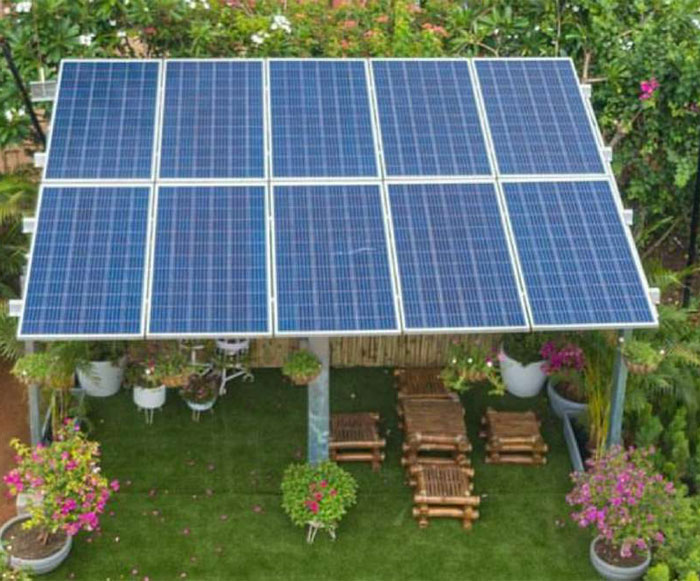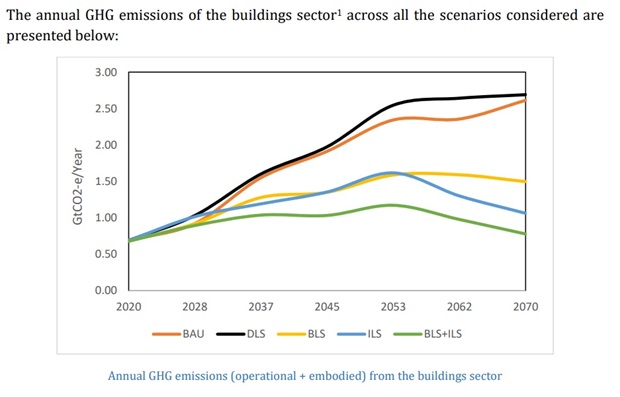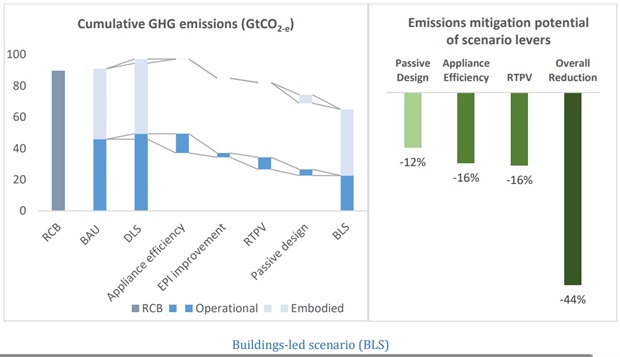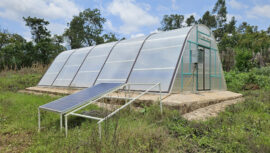Highlights :
- This CSTEP model primarily focuses on accommodating the demands stemming from India’s development goals, which impact energy requirements and emissions across various economic sectors.
 Rooftop Solar Can Aid In Mitigating 16% Building Emissions: CSTEP
Rooftop Solar Can Aid In Mitigating 16% Building Emissions: CSTEP A recent report published by CSTEP (Center for Study of Science, Technology, and Policy) said that rooftop solar deployment alone could mitigate 16 percent of building emissions in India. The findings came to the fore in the report of the Bangalore-based think tank’s study to develop net-zero pathways for India’s buildings sector by 2070, using the system dynamics model Sustainable Alternatives Futures for India (SAFARI).
This CSTEP model primarily focuses on accommodating the demands stemming from India’s development goals, which impact energy requirements and emissions across various economic sectors.

The CSTEP report said that Annual Greenhouse Gas (GHG) emissions from the building sector are likely to rise under a decent living standard (DLS) and Business-as-usual scenario (BAU).
The report said that the decarbonization pathway led by stakeholders in the building sector can reduce upto 43 percent of emissions from buildings.
“The BLS scenario envisions the impacts of interventions driven by behavioural changes, such as opting for cleaner cooking fuel and uptake of energy-efficient appliances and solar rooftop systems. This scenario also assumes the achievement of decent living standards. By 2070, the annual embodied emissions can reduce by 16%, while the annual operational emissions can come down by 69,” the report said.
It said that installing rooftop solar systems alone can reduce emissions by 16 percent while adopting energy-efficient measures can reduce emissions by an additional 16 percent. On the other, the introduction of passive designs can also reduce emissions to another 12 percent.
The report said that in the BAU scenario, the cumulative emissions (direct and embodied) from buildings between 2020 and 2070 are projected to reach 90.85 GtCO2-e, exceeding the carbon budget allocated for India by 2%. In the absence of additional climate action, they would constitute 21% of India’s total emissions in 2070, it said.
“Accounting for efforts towards developmental goals such as achieving housing and clean cooking for all by 2030 and providing thermal comfort results in cumulative emissions of 97.11 GtCO2-e, overshooting the carbon budget by 8%, in the DLS scenario. In terms of gross built-up area, achieving “housing for all” results in a 10% increase over BAU by 2070,” the CSTEP report said.




























